Zhixiong Zeng
UItron: Foundational GUI Agent with Advanced Perception and Planning
Aug 29, 2025Abstract:GUI agent aims to enable automated operations on Mobile/PC devices, which is an important task toward achieving artificial general intelligence. The rapid advancement of VLMs accelerates the development of GUI agents, owing to their powerful capabilities in visual understanding and task planning. However, building a GUI agent remains a challenging task due to the scarcity of operation trajectories, the availability of interactive infrastructure, and the limitation of initial capabilities in foundation models. In this work, we introduce UItron, an open-source foundational model for automatic GUI agents, featuring advanced GUI perception, grounding, and planning capabilities. UItron highlights the necessity of systemic data engineering and interactive infrastructure as foundational components for advancing GUI agent development. It not only systematically studies a series of data engineering strategies to enhance training effects, but also establishes an interactive environment connecting both Mobile and PC devices. In training, UItron adopts supervised finetuning over perception and planning tasks in various GUI scenarios, and then develop a curriculum reinforcement learning framework to enable complex reasoning and exploration for online environments. As a result, UItron achieves superior performance in benchmarks of GUI perception, grounding, and planning. In particular, UItron highlights the interaction proficiency with top-tier Chinese mobile APPs, as we identified a general lack of Chinese capabilities even in state-of-the-art solutions. To this end, we manually collect over one million steps of operation trajectories across the top 100 most popular apps, and build the offline and online agent evaluation environments. Experimental results demonstrate that UItron achieves significant progress in Chinese app scenarios, propelling GUI agents one step closer to real-world application.
DocTron-Formula: Generalized Formula Recognition in Complex and Structured Scenarios
Aug 01, 2025Abstract:Optical Character Recognition (OCR) for mathematical formula is essential for the intelligent analysis of scientific literature. However, both task-specific and general vision-language models often struggle to handle the structural diversity, complexity, and real-world variability inherent in mathematical content. In this work, we present DocTron-Formula, a unified framework built upon general vision-language models, thereby eliminating the need for specialized architectures. Furthermore, we introduce CSFormula, a large-scale and challenging dataset that encompasses multidisciplinary and structurally complex formulas at the line, paragraph, and page levels. Through straightforward supervised fine-tuning, our approach achieves state-of-the-art performance across a variety of styles, scientific domains, and complex layouts. Experimental results demonstrate that our method not only surpasses specialized models in terms of accuracy and robustness, but also establishes a new paradigm for the automated understanding of complex scientific documents.
ScaleTrack: Scaling and back-tracking Automated GUI Agents
May 01, 2025Abstract:Automated GUI agents aims to facilitate user interaction by automatically performing complex tasks in digital environments, such as web, mobile, desktop devices. It receives textual task instruction and GUI description to generate executable actions (\emph{e.g.}, click) and operation boxes step by step. Training a GUI agent mainly involves grounding and planning stages, in which the GUI grounding focuses on finding the execution coordinates according to the task, while the planning stage aims to predict the next action based on historical actions. However, previous work suffers from the limitations of insufficient training data for GUI grounding, as well as the ignorance of backtracking historical behaviors for GUI planning. To handle the above challenges, we propose ScaleTrack, a training framework by scaling grounding and backtracking planning for automated GUI agents. We carefully collected GUI samples of different synthesis criterions from a wide range of sources, and unified them into the same template for training GUI grounding models. Moreover, we design a novel training strategy that predicts the next action from the current GUI image, while also backtracking the historical actions that led to the GUI image. In this way, ScaleTrack explains the correspondence between GUI images and actions, which effectively describes the evolution rules of the GUI environment. Extensive experimental results demonstrate the effectiveness of ScaleTrack. Data and code will be available at url.
Learning Multi-Stage Multi-Grained Semantic Embeddings for E-Commerce Search
Mar 20, 2023



Abstract:Retrieving relevant items that match users' queries from billion-scale corpus forms the core of industrial e-commerce search systems, in which embedding-based retrieval (EBR) methods are prevailing. These methods adopt a two-tower framework to learn embedding vectors for query and item separately and thus leverage efficient approximate nearest neighbor (ANN) search to retrieve relevant items. However, existing EBR methods usually ignore inconsistent user behaviors in industrial multi-stage search systems, resulting in insufficient retrieval efficiency with a low commercial return. To tackle this challenge, we propose to improve EBR methods by learning Multi-level Multi-Grained Semantic Embeddings(MMSE). We propose the multi-stage information mining to exploit the ordered, clicked, unclicked and random sampled items in practical user behavior data, and then capture query-item similarity via a post-fusion strategy. We then propose multi-grained learning objectives that integrate the retrieval loss with global comparison ability and the ranking loss with local comparison ability to generate semantic embeddings. Both experiments on a real-world billion-scale dataset and online A/B tests verify the effectiveness of MMSE in achieving significant performance improvements on metrics such as offline recall and online conversion rate (CVR).
A Comprehensive Empirical Study of Vision-Language Pre-trained Model for Supervised Cross-Modal Retrieval
Jan 08, 2022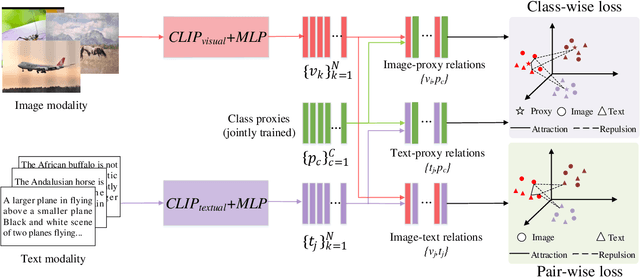
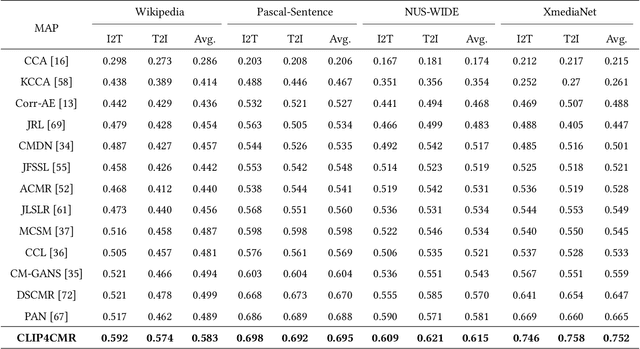
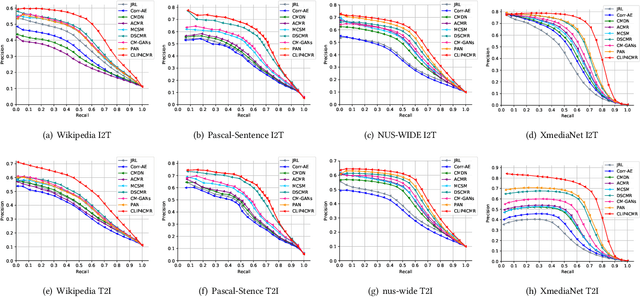

Abstract:Cross-Modal Retrieval (CMR) is an important research topic across multimodal computing and information retrieval, which takes one type of data as the query to retrieve relevant data of another type, and has been widely used in many real-world applications. Recently, the vision-language pre-trained model represented by CLIP has demonstrated its superiority of learning visual and textual representations and its impressive performance on various vision and language related tasks. Although CLIP as well as the previous pre-trained models have shown great performance improvement in unsupervised CMR, the performance and impact of these pre-trained models on supervised CMR were rarely explored due to the lack of multimodal class-level associations. In this paper, we take CLIP as the current representative vision-language pre-trained model to conduct a comprehensive empirical study and provide insights on its performance and impact on supervised CMR. To this end, we first propose a novel model CLIP4CMR (\textbf{CLIP For} supervised \textbf{C}ross-\textbf{M}odal \textbf{R}etrieval) that employs pre-trained CLIP as backbone network to perform supervised CMR. We then revisit the existing loss function design in CMR, including the most common pair-wise losses, class-wise losses and hybrid ones, and provide insights on applying CLIP. Moreover, we investigate several concerned issues in supervised CMR and provide new perspectives for this field via CLIP4CMR, including the robustness to modality imbalance and the sensitivity to hyper-parameters. Extensive experimental results show that the CLIP4CMR achieves SOTA results with significant improvements on the benchmark datasets Wikipedia, NUS-WIDE, Pascal-Sentence and XmediaNet. Our data and codes are publicly available at https://github.com/zhixiongz/CLIP4CMR.
AliMe MKG: A Multi-modal Knowledge Graph for Live-streaming E-commerce
Sep 13, 2021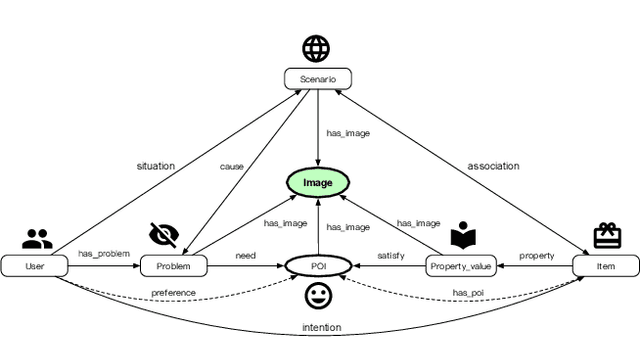

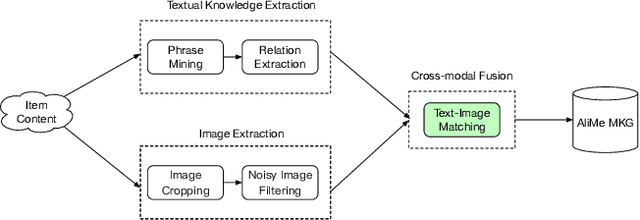
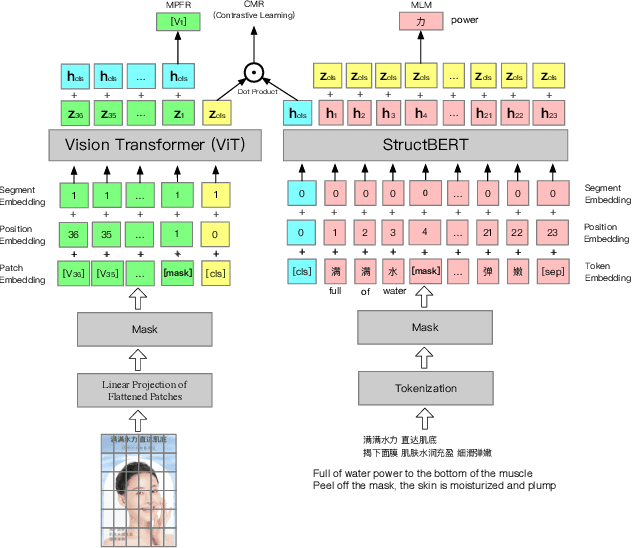
Abstract:Live streaming is becoming an increasingly popular trend of sales in E-commerce. The core of live-streaming sales is to encourage customers to purchase in an online broadcasting room. To enable customers to better understand a product without jumping out, we propose AliMe MKG, a multi-modal knowledge graph that aims at providing a cognitive profile for products, through which customers are able to seek information about and understand a product. Based on the MKG, we build an online live assistant that highlights product search, product exhibition and question answering, allowing customers to skim over item list, view item details, and ask item-related questions. Our system has been launched online in the Taobao app, and currently serves hundreds of thousands of customers per day.
 Add to Chrome
Add to Chrome Add to Firefox
Add to Firefox Add to Edge
Add to Edge